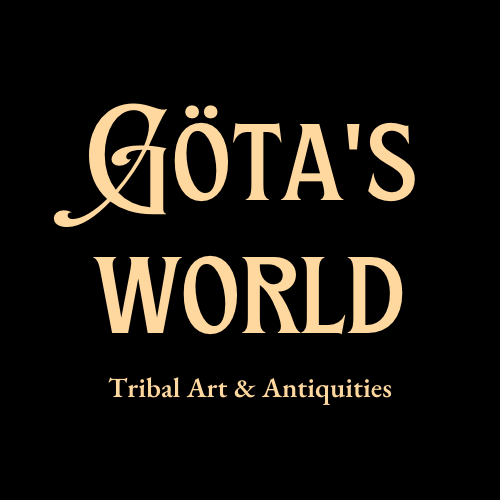Etruscan Bronze Statuette of Herakles (Hercle)
Etruscan Bronze Statuette of Herakles (Hercle)
Couldn't load pickup availability
Classical Period, c. 480–300 BC, Etruria, Italy
An exceptional and highly refined bronze statuette of the mythological hero Herakles—known to the Etruscans as Hercle—depicted nude and standing in an elegant contrapposto pose. His weight rests firmly on his right leg, with the left subtly bent, evoking a sense of poised movement. Hercle raises his right arm, once holding a club (now lost), while the Nemean lion skin, symbolizing his first labour, is draped gracefully over his extended left arm. The lion skin is rendered with remarkable detail—its head, paws, and tail clearly defined.
The figure’s rounded head, large almond-shaped eyes, pointed nose, and finely sculpted mouth give him a distinctive and expressive presence. His short, cap-like hair is engraved with parallel incised lines, typical of Etruscan style. The entire figure is meticulously modelled, with highly polished surfaces accentuating the powerful musculature—from the arms and torso to the thighs and calves—imbuing the piece with both grace and strength.
Two integral tangs beneath the feet would have originally secured the statuette to a base; it is now mounted on a modern Carrara marble plinth, providing a striking contrast.
Herakles (Hercle) was a beloved figure in Etruscan religion and art, admired for his strength, virtue, and protective power. In northern Italy, he was venerated as a defender of civilization against monstrous forces. Small bronze votive figures such as this were frequently offered at sanctuaries dedicated to Hercle, particularly throughout the Sabellian region of Etruria.
Etruscan bronze statuettes were traditionally solid-cast using the lost-wax technique, with finer details—such as the engraved hair—added post-casting. This statuette exemplifies the naturalism, technical sophistication, and symbolic power of Etruscan bronze work at its finest.
Excellent condition. Wear consistent with age and use. Parts of the club and hands is missing. A sharp bronze with a fine glossy black-green patina. Size approx. 10,4cm x 5,5cm x 3,2cm (excluding the base).
Provenance: Finnish private collection.
NB! This object has been examined and evaluated by The Finnish National Gallery.
For a similar examples see:
Statuette of Herakles, The Metropolitan Museum of Art, Accession Number: 96.9.430 (https://www.metmuseum.org/art/collection/search/246431)
Statuette "Hercule", Bibliothèque Nationale in Paris, Accession Number: bronze.551, bronze.530 & bronze.528
Statuette of Herakles (Hercules), National Trust Collections, Accession Number: 515071 (https://www.nationaltrustcollections.org.uk/object/515071)
References and further reading:
Italy of the Etruscans, Ines Jucker, Verlag P. von Zabern, 1991.
Greek, Etruscan & Roman Bronzes in the Museum of Fine Arts, Mary Comstock and Cornelius Vermeule, Museum of Fine Arts Boston, Boston, 1971.
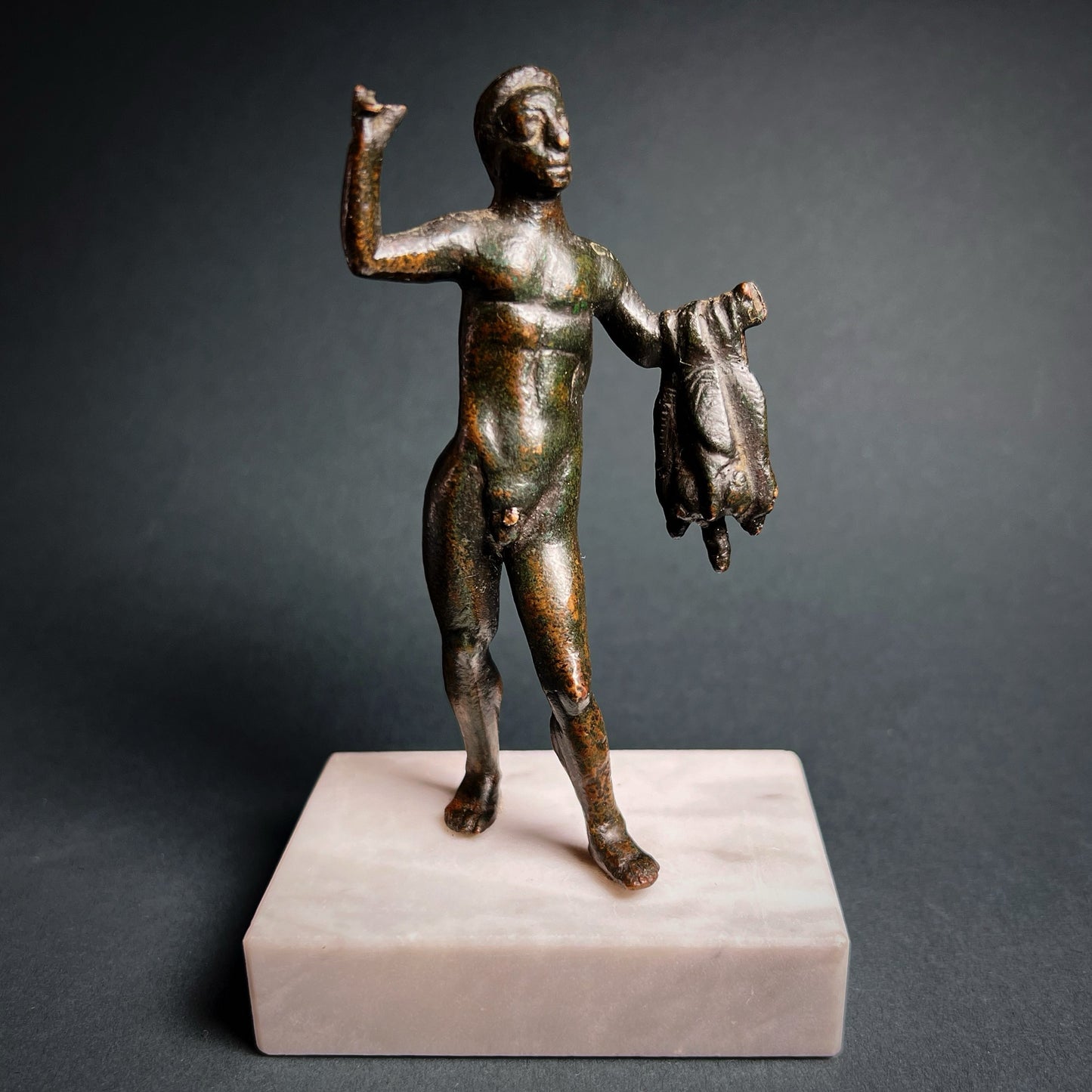
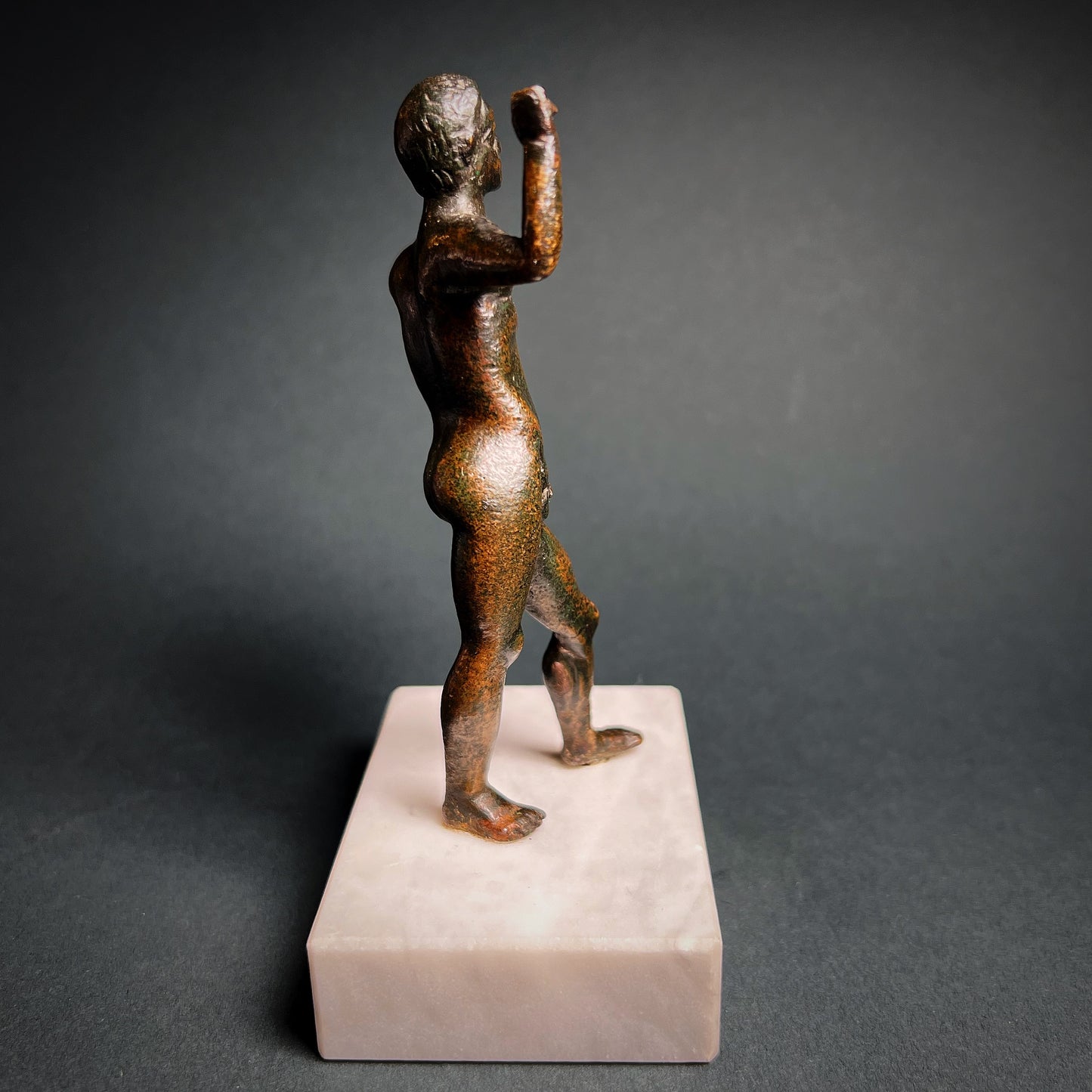
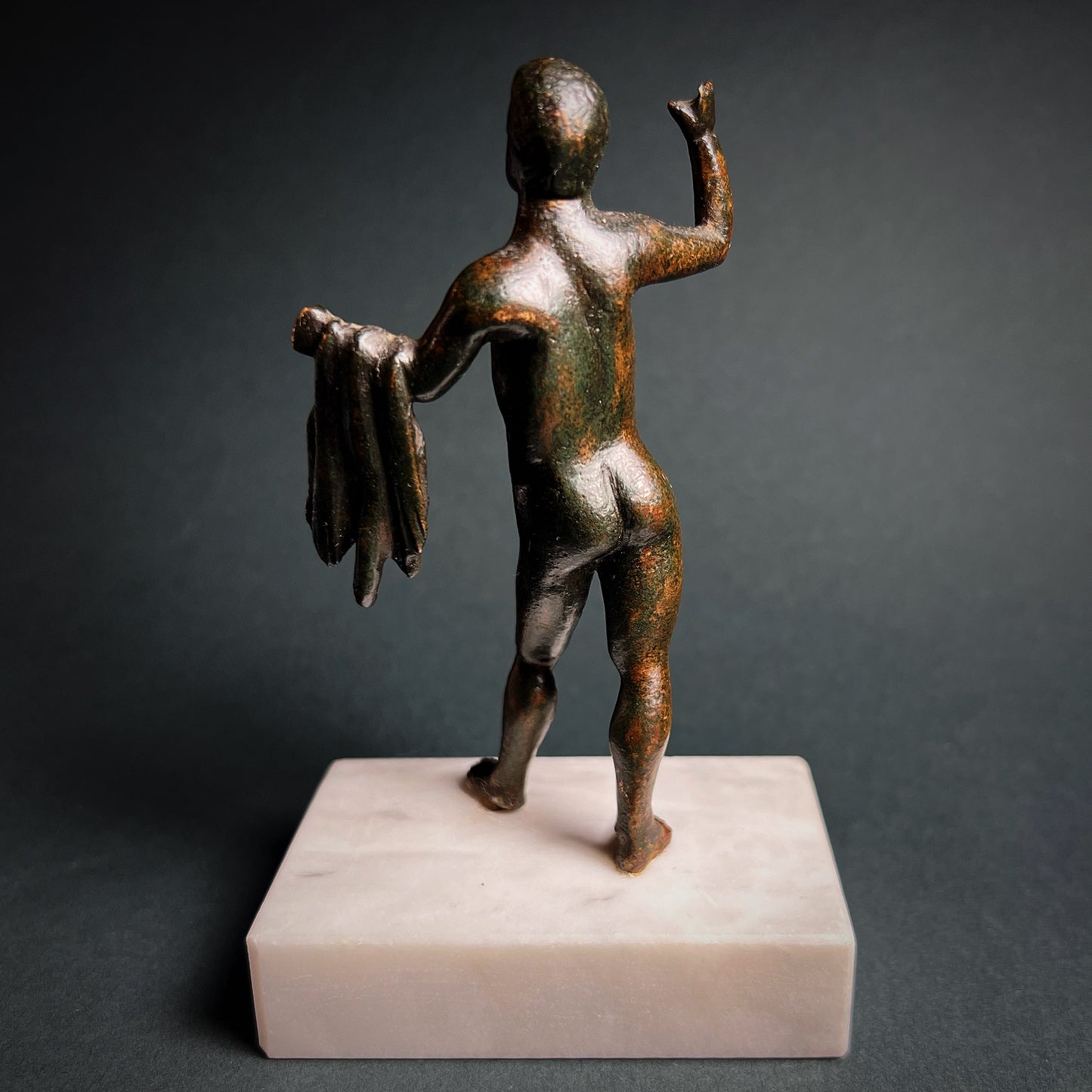
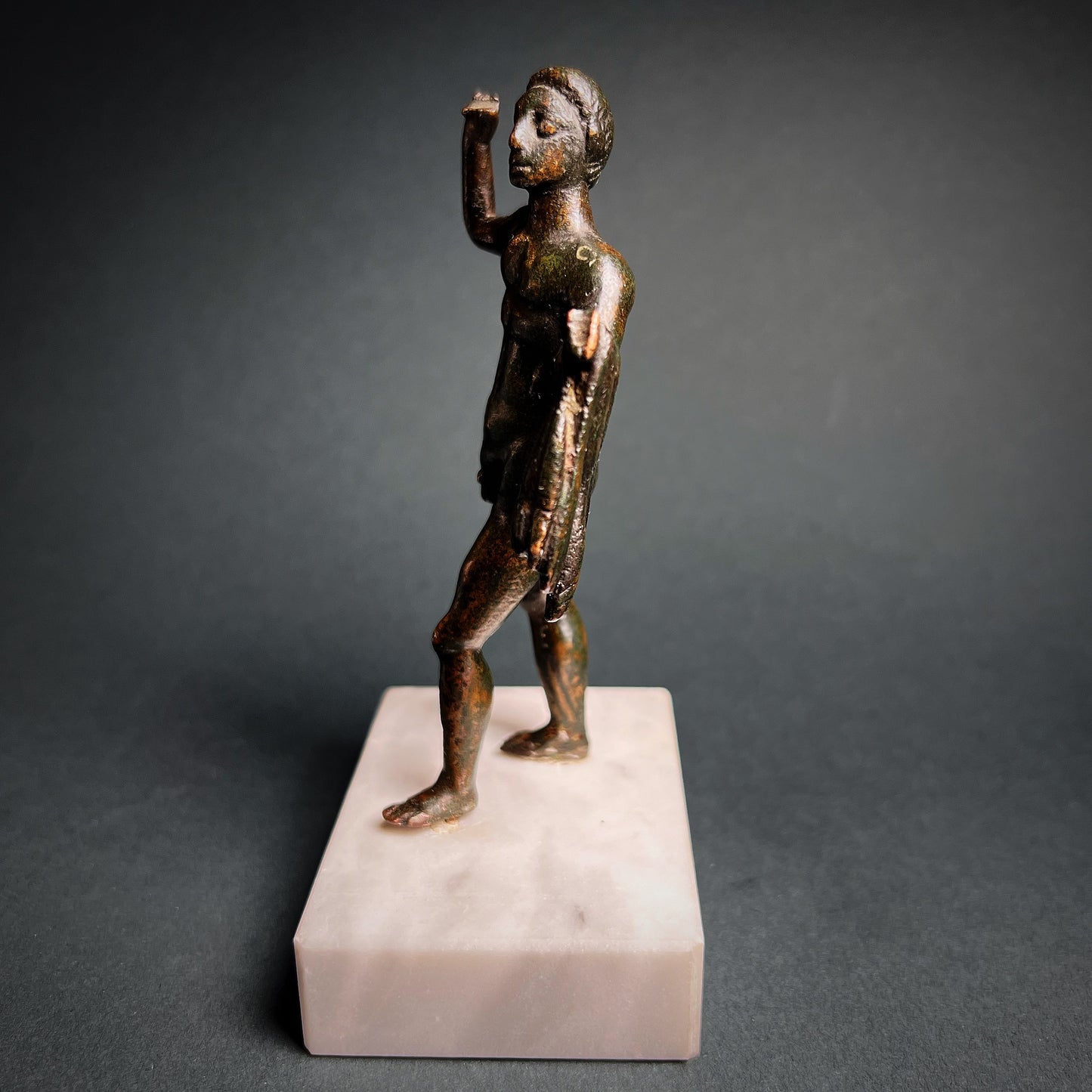
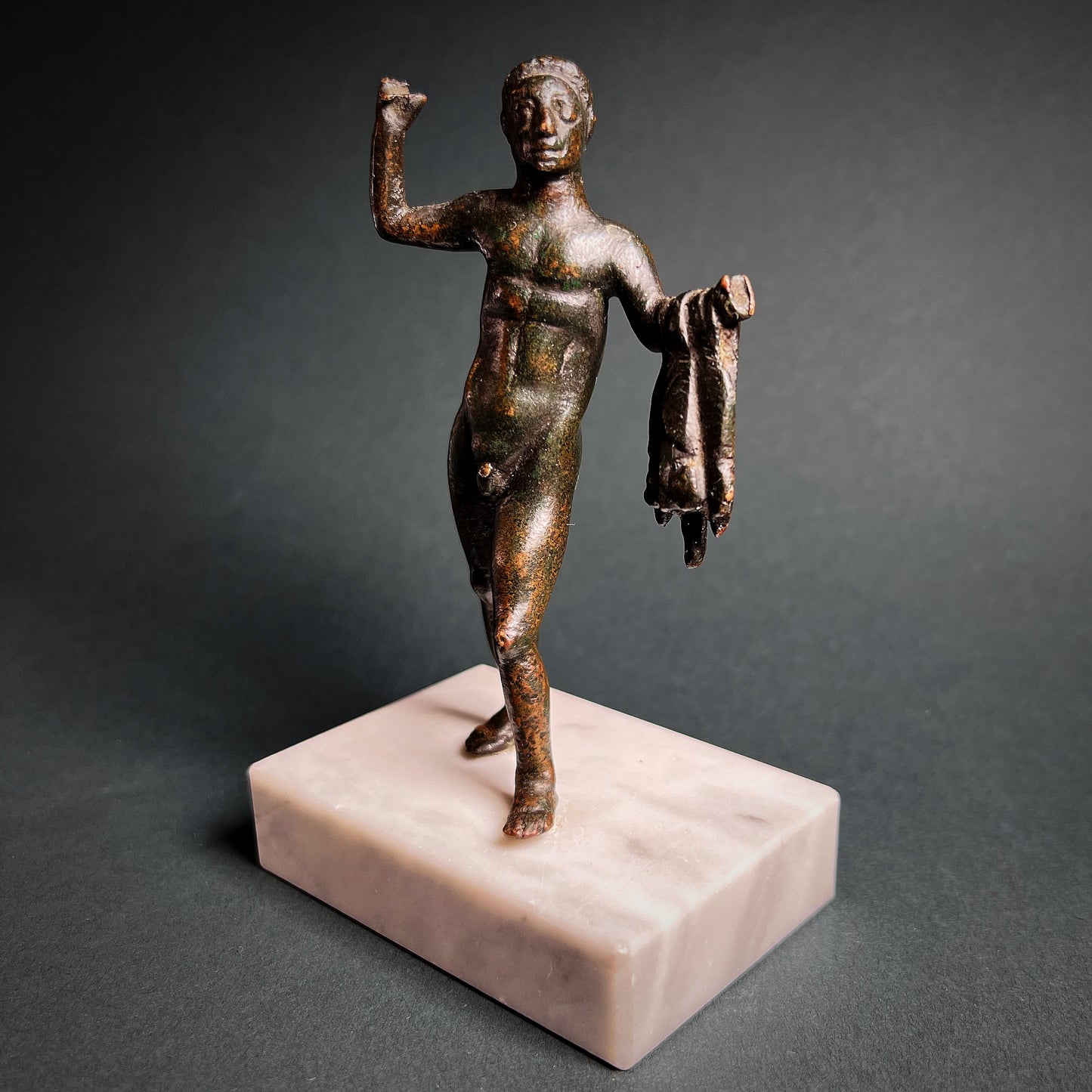
-
Shipping
The shipment will be prepared in the course of 3-5 days and dispatched via Posti Group Oyj or purchased item(s) can be picked up from our shop during the store's opening hours (Tarkk’ampujankatu 4, 00140, Helsinki, Finland). Within the Finland, all items are shipped via Posti Group Oyj unless otherwise requested. We pack the items carefully and mainly in recycled materials because we want to save nature. You will receive the tracking number for your items by e-mail.
-
Returns
Returns and exchange will be accepted within fourteen days (14) of receipt at the purchaser’s cost to include freight and packaging. Items must be returned in the same condition as when they were shipped, and will not be accepted if damaged or altered in any way. Please inform us via email (info@gotanmaailma.fi) or by calling +358408408352 before sending. We do not accept returns more than 14 days after delivery.
